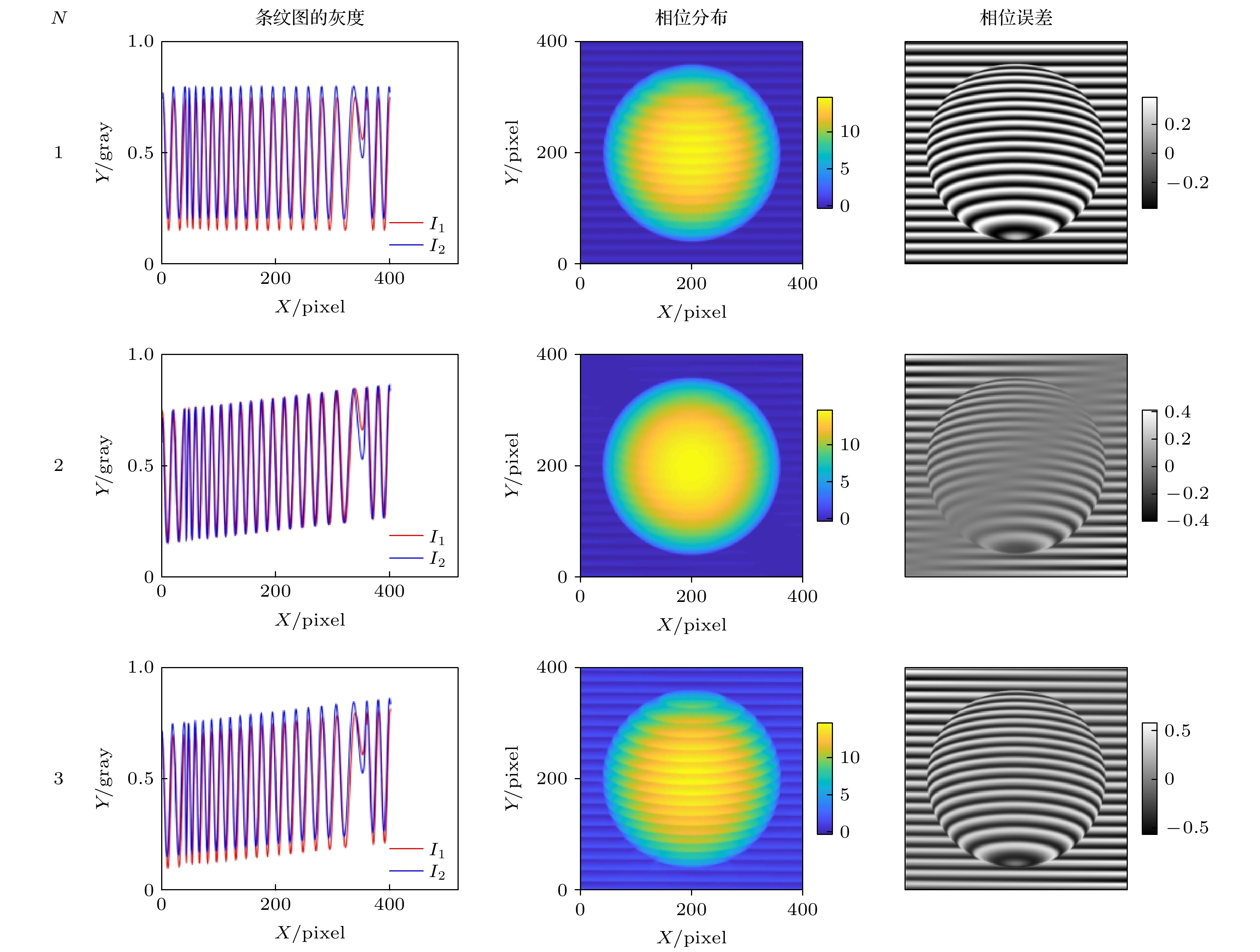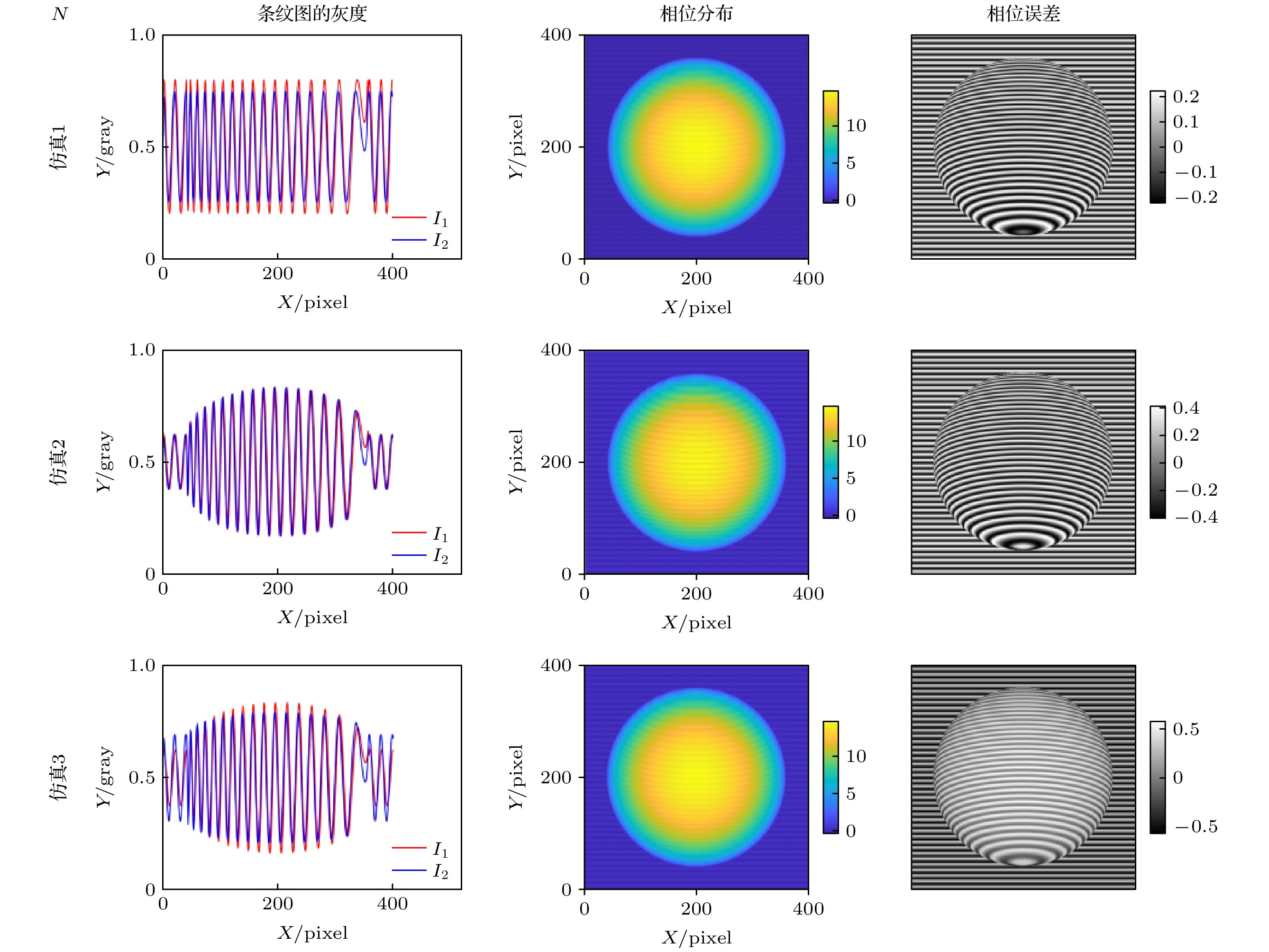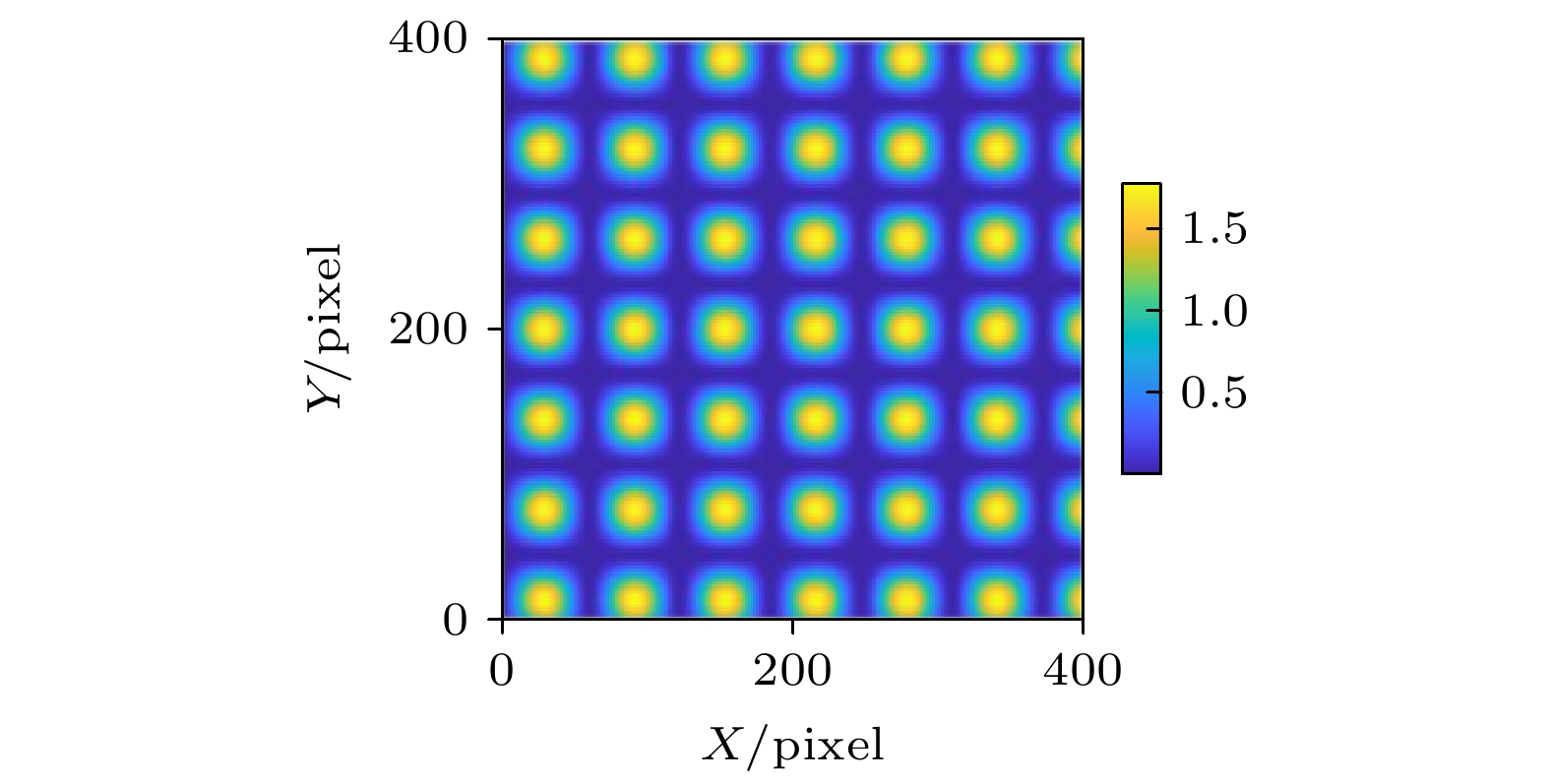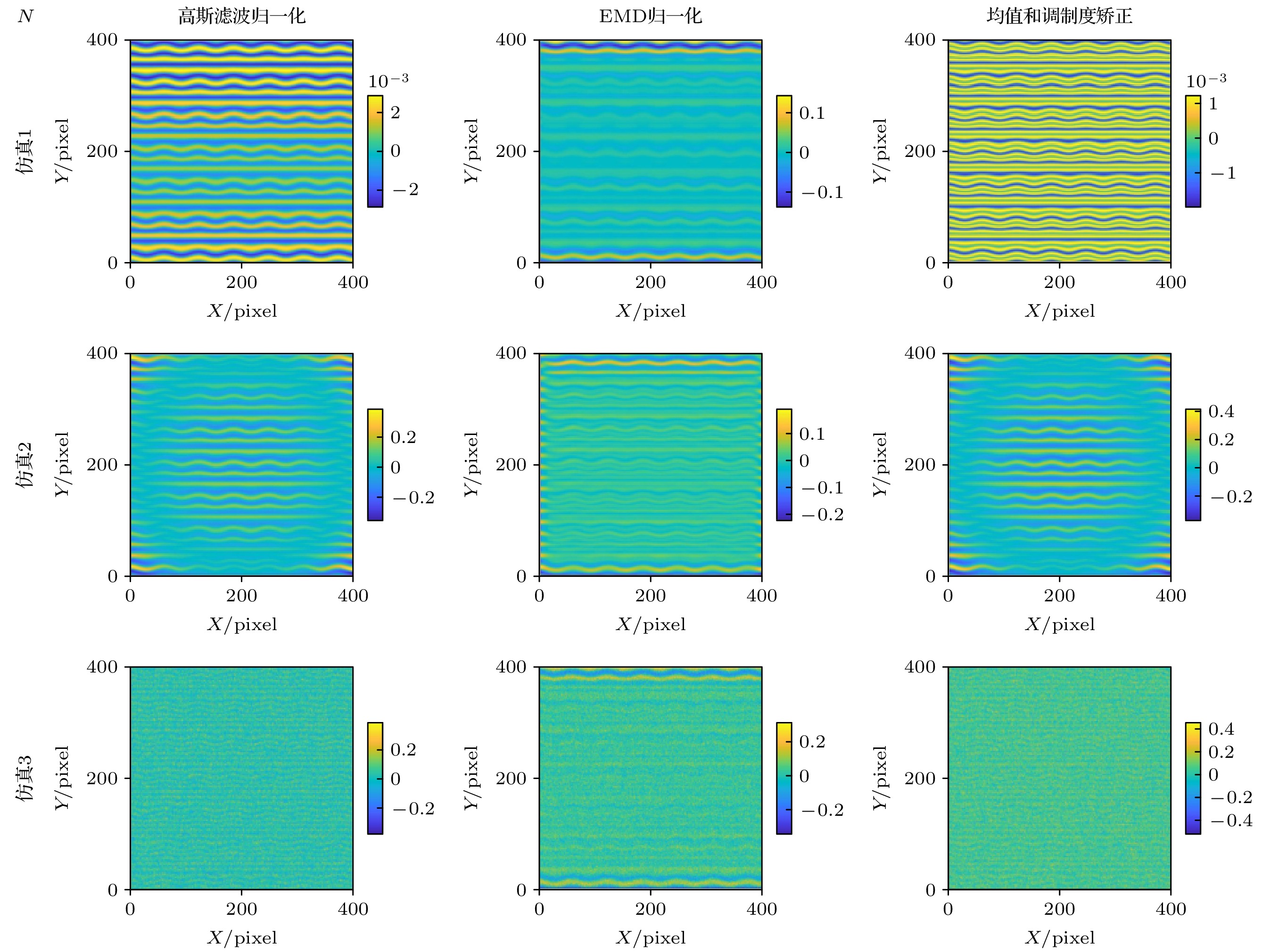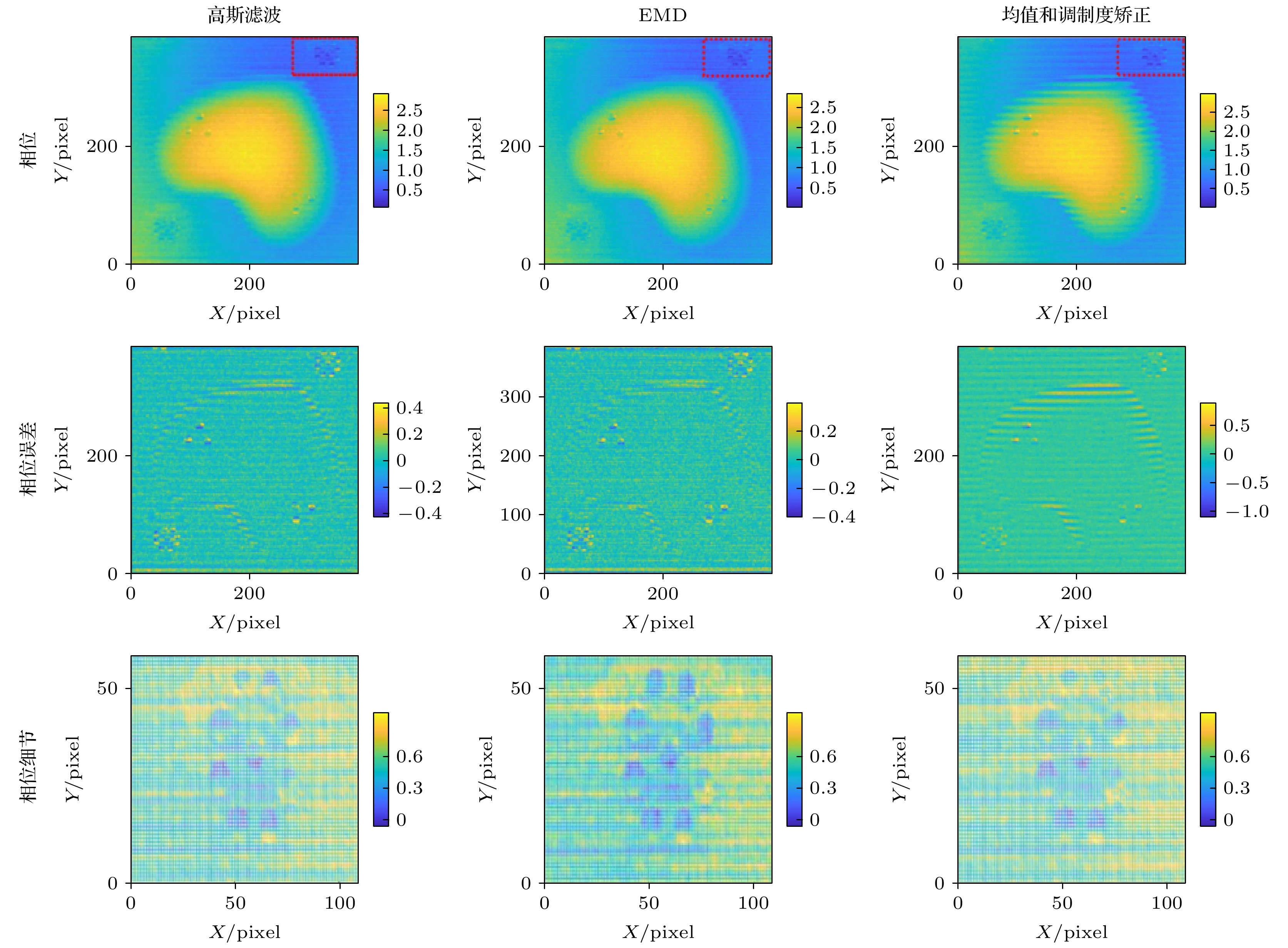-
相移轮廓术(phase shifting profilometry, PSP)至少需要三帧条纹图提取物体的相位信息. 在动态测量中, 减少条纹数有助于快速测量, 并且可以抑制运动物体存在的相移误差. 为了克服上述问题, 本文提出基于利萨茹椭圆拟合(Lissajous ellipse fitting, LEF)的两步相移轮廓术, 针对条纹背景和调制度分布不均匀导致的LEF相位误差, 给出了误差抑制方法. 实验实现了基于LEF的两步相移动态场景测量, 与多帧PSP相比, 本文所述方法可以减少条纹帧数并且可抑制物体的运动导致的相移误差.
Phase shifting profilometry (PSP) is an effective technique to reconstruct the three-dimensional shape of object. In general, PSP needs three or more fringe patterns with phase-shifting accurately known to extract the phase distribution of objects. Therefore, the scene and the test objects should remain stationary during capturing the fringe patterns. However, the phase shifts may be unknown in an actual PSP measurement system, especially when measuring the moving object, that is, the phase-shift error may be introduced during the obtaining of the phase-shifting fringe patterns of moving object. In the dynamic measurement scenario, the use of fewer fringe patterns can realize the faster measurement speed and suppress the phase shift error introduced by the moving object. In this paper, a two-step PSP algorithm is proposed based on Lissajous ellipse fitting (LEF). The proposed method uses only two fringe patterns to extract the phase distribution of the object and can suppress the phase shift error caused by the moving object. However, in a practical PSP system, the spatiotemporally varying background intensity and modulation also significantly affect the phase accuracy extracted by LEF, and thus three error-suppressing methods are proposed to reduce the phase error caused by the non-uniform background intensity and modulation. In order to verify the effectiveness of the three error-suppressing methods, we analyze and compare their performances of error suppression under different background intensities and modulations. The advantages of three error-suppressing methods can be summarized as follows. 1) The mean and modulation correction technique has greater advantage than the other two when the background intensity and modulation vary with time. 2) When the background intensity and modulation are relevant to pixel position and the number of fringe patterns, the empirical mode decomposition normalization can more effectively suppress the influence of the non-uniform background intensity and modulation. In experiment, a two-step phase-shifting dynamic measurement based on LEF is conducted. Compared with the traditional PSP which needs at least three fringe patterns, the two-step PSP algorithm successfully extracts the phase with only two fringe patterns and suppresses the phase shift error caused by the motion of the object. Compared with Fourier transform profilometry (FTP), the two-step PSP algorithm can obtain very accurate phase distribution and retain many phase details. -
Keywords:
- fringe projection technology /
- phase reconstruction /
- phase shifting profilometry /
- phase shift error
[1] Li B W, Liu Z P, Zhang S 2016 Opt. Express 24 23289
 Google Scholar
Google Scholar
[2] Wu Y X, Cai X J, Zhu J J, Yue H M, Shao X P 2020 Opt. Lasers Eng. 127 105987
 Google Scholar
Google Scholar
[3] Feng S J, Zhang L, Zuo C, Tao T Y, Chen Q, Gu G H 2018 Meas. Sci. Technol. 29 122001
 Google Scholar
Google Scholar
[4] Pan B, Kemao Q, Huang L, Asundi A 2009 Opt. Lett. 34 416
 Google Scholar
Google Scholar
[5] Wang Y J, Zhang S, Oliver J H 2011 Opt. Express 19 8539
 Google Scholar
Google Scholar
[6] Isaac T, Heejoo C, Wook K D 2016 Opt. Express 24 27993
 Google Scholar
Google Scholar
[7] Lilley F, Lalor M J, Burton D R 2000 Opt. Eng. 39 187
 Google Scholar
Google Scholar
[8] Servin M, Garnica G, Estrada J C, Padilla J M 2014 Opt. Express 22 10914
 Google Scholar
Google Scholar
[9] Wang Y, Laughner J I, Efimov I R, Zhang S 2013 Opt. Express 21 5822
 Google Scholar
Google Scholar
[10] Lu L, Xi J T, Yu Y G, Guo Q H 2014 Opt. Lett. 39 6715
 Google Scholar
Google Scholar
[11] Cai Z W, Liu X L, Jiang H, He D, Peng X, Huang S J, Zhang S H 2015 Opt. Express 23 25171
 Google Scholar
Google Scholar
[12] Tao T Y, Chen Q, Da J, Feng S J, Hu Y, Zuo C 2016 Opt. Express 24 20253
 Google Scholar
Google Scholar
[13] Liu Z P, Zibley P C, Zhang S 2018 Opt. Express 26 12632
 Google Scholar
Google Scholar
[14] Wang Y, Liu Z P, Jiang C, Zhang S 2018 Opt. Express 26 34224
 Google Scholar
Google Scholar
[15] Feng S J, Zuo C, Tao T Y, Hu Y, Zhang M L, Chen Q, Gu G H 2018 Opt. Lasers Eng. 103 127
 Google Scholar
Google Scholar
[16] Lu L, Xi J T, Yu Y G, Guo Q H 2013 Opt. Express 21 30610
 Google Scholar
Google Scholar
[17] Wang Z Y, Han B 2004 Opt. Lett. 29 1671
 Google Scholar
Google Scholar
[18] Su X Y, Chen W J 2001 Opt. Lasers Eng. 35 263
 Google Scholar
Google Scholar
[19] 徐建亮, 汪敏, 潘慧, 刘晓辉, 戚晓利, 许四祥 2011 物理学报 60 074210
 Google Scholar
Google Scholar
Xu J L, Wang M, Pan H, Liu X H, Qi X L, Xu S X 2011 Acta Phys. Sin. 60 074210
 Google Scholar
Google Scholar
[20] Hu Y, Chen Q, Zhang Y Z, Feng S J, Tao T Y, Li H, Yin W, Zuo C 2018 Appl. Opt. 57 772
 Google Scholar
Google Scholar
[21] Li B W, An Y T, Zhang S 2016 Appl. Opt. 55 5219
 Google Scholar
Google Scholar
[22] Zhong J G, Weng J W 2005 Opt. Lett. 30 2560
 Google Scholar
Google Scholar
[23] Zhong M, Chen W J, Wang T, Su X Y 2013 Opt. Lasers Eng. 51 1138
 Google Scholar
Google Scholar
[24] Wang S J, Li W L, Wang Y, Jiang Y Y, Jiang S, Zhao R L 2012 J. Multimedia 7 429
 Google Scholar
Google Scholar
[25] Huang N E, Sheng Z, Long S R, Wu M C, Shih W H, Zeng Q, Yen N C, Tung C C, Liu H H 1998 Proc. Math. Phys. Eng. Sci. 454 903
 Google Scholar
Google Scholar
[26] Bernini M B, Galizzi, G E, Federico, A, Kaufmann, G H 2007 Opt. Lasers Eng. 45 723
 Google Scholar
Google Scholar
-
图 9 十步相移方法的测量结果 (a) 待测物体; (b) 物体的条纹图; (c) 十步相移方法提取的相位分步; (d) 图(c)中红色方框内的相位细节
Fig. 9. Measurement results of ten-step phase shifting method: (a) Test object; (b) fringe pattern of the test object; (c) the reference phase distribution based on ten-step phase-shifting method; (d) the enlarged phase details in red rectangular of Fig. (c).
图 12 运动物体的实验结果 (a) 三步相移方法提取的相位; (b) 基于高斯滤波归一化的两步PSP重建的相位; (c) 基于EMD归一化的两步PSP重建相位; (d) 基于均值和调制度矫正的两步PSP重建相位
Fig. 12. Experimental results of moving objects: (a) The extracted phase by three-step phase shifting method; (b) the phase obtained from two-step PSP based on Gaussian filter normalization; (c) the phase estimated from two-step PSP based on EMD normalization; (d) the phase estimated from two-step PSP based on the mean value and modulation.
表 1 不同情况下基于LEF的两步PSP方法计算的相位误差均方根
Table 1. Root mean square of phase error calculated by two-step PSP based on the normalized LEF under different conditions.
N 1 2 3 高斯滤波归一化/rad 0.0022 0.0729 0.0624 EMD归一化/rad 0.0216 0.0319 0.0608 均值和调制度矫正归一化/rad 0.0013 0.0805 0.0847 表 2 不同情况下基于LEF的两步PSP方法计算的相移误差均方根
Table 2. Root mean square of phase-shifting error calculated by two-step PSP based on the normalized LEF under different conditions.
N 1 2 3 高斯滤波归一化/rad 0 0.0125 0.0117 EMD归一化/rad 0.0017 0.0039 0.0108 均值和调制度矫正归一化/rad 0 0.0183 0.0206 -
[1] Li B W, Liu Z P, Zhang S 2016 Opt. Express 24 23289
 Google Scholar
Google Scholar
[2] Wu Y X, Cai X J, Zhu J J, Yue H M, Shao X P 2020 Opt. Lasers Eng. 127 105987
 Google Scholar
Google Scholar
[3] Feng S J, Zhang L, Zuo C, Tao T Y, Chen Q, Gu G H 2018 Meas. Sci. Technol. 29 122001
 Google Scholar
Google Scholar
[4] Pan B, Kemao Q, Huang L, Asundi A 2009 Opt. Lett. 34 416
 Google Scholar
Google Scholar
[5] Wang Y J, Zhang S, Oliver J H 2011 Opt. Express 19 8539
 Google Scholar
Google Scholar
[6] Isaac T, Heejoo C, Wook K D 2016 Opt. Express 24 27993
 Google Scholar
Google Scholar
[7] Lilley F, Lalor M J, Burton D R 2000 Opt. Eng. 39 187
 Google Scholar
Google Scholar
[8] Servin M, Garnica G, Estrada J C, Padilla J M 2014 Opt. Express 22 10914
 Google Scholar
Google Scholar
[9] Wang Y, Laughner J I, Efimov I R, Zhang S 2013 Opt. Express 21 5822
 Google Scholar
Google Scholar
[10] Lu L, Xi J T, Yu Y G, Guo Q H 2014 Opt. Lett. 39 6715
 Google Scholar
Google Scholar
[11] Cai Z W, Liu X L, Jiang H, He D, Peng X, Huang S J, Zhang S H 2015 Opt. Express 23 25171
 Google Scholar
Google Scholar
[12] Tao T Y, Chen Q, Da J, Feng S J, Hu Y, Zuo C 2016 Opt. Express 24 20253
 Google Scholar
Google Scholar
[13] Liu Z P, Zibley P C, Zhang S 2018 Opt. Express 26 12632
 Google Scholar
Google Scholar
[14] Wang Y, Liu Z P, Jiang C, Zhang S 2018 Opt. Express 26 34224
 Google Scholar
Google Scholar
[15] Feng S J, Zuo C, Tao T Y, Hu Y, Zhang M L, Chen Q, Gu G H 2018 Opt. Lasers Eng. 103 127
 Google Scholar
Google Scholar
[16] Lu L, Xi J T, Yu Y G, Guo Q H 2013 Opt. Express 21 30610
 Google Scholar
Google Scholar
[17] Wang Z Y, Han B 2004 Opt. Lett. 29 1671
 Google Scholar
Google Scholar
[18] Su X Y, Chen W J 2001 Opt. Lasers Eng. 35 263
 Google Scholar
Google Scholar
[19] 徐建亮, 汪敏, 潘慧, 刘晓辉, 戚晓利, 许四祥 2011 物理学报 60 074210
 Google Scholar
Google Scholar
Xu J L, Wang M, Pan H, Liu X H, Qi X L, Xu S X 2011 Acta Phys. Sin. 60 074210
 Google Scholar
Google Scholar
[20] Hu Y, Chen Q, Zhang Y Z, Feng S J, Tao T Y, Li H, Yin W, Zuo C 2018 Appl. Opt. 57 772
 Google Scholar
Google Scholar
[21] Li B W, An Y T, Zhang S 2016 Appl. Opt. 55 5219
 Google Scholar
Google Scholar
[22] Zhong J G, Weng J W 2005 Opt. Lett. 30 2560
 Google Scholar
Google Scholar
[23] Zhong M, Chen W J, Wang T, Su X Y 2013 Opt. Lasers Eng. 51 1138
 Google Scholar
Google Scholar
[24] Wang S J, Li W L, Wang Y, Jiang Y Y, Jiang S, Zhao R L 2012 J. Multimedia 7 429
 Google Scholar
Google Scholar
[25] Huang N E, Sheng Z, Long S R, Wu M C, Shih W H, Zeng Q, Yen N C, Tung C C, Liu H H 1998 Proc. Math. Phys. Eng. Sci. 454 903
 Google Scholar
Google Scholar
[26] Bernini M B, Galizzi, G E, Federico, A, Kaufmann, G H 2007 Opt. Lasers Eng. 45 723
 Google Scholar
Google Scholar
计量
- 文章访问数: 7406
- PDF下载量: 122
- 被引次数: 0













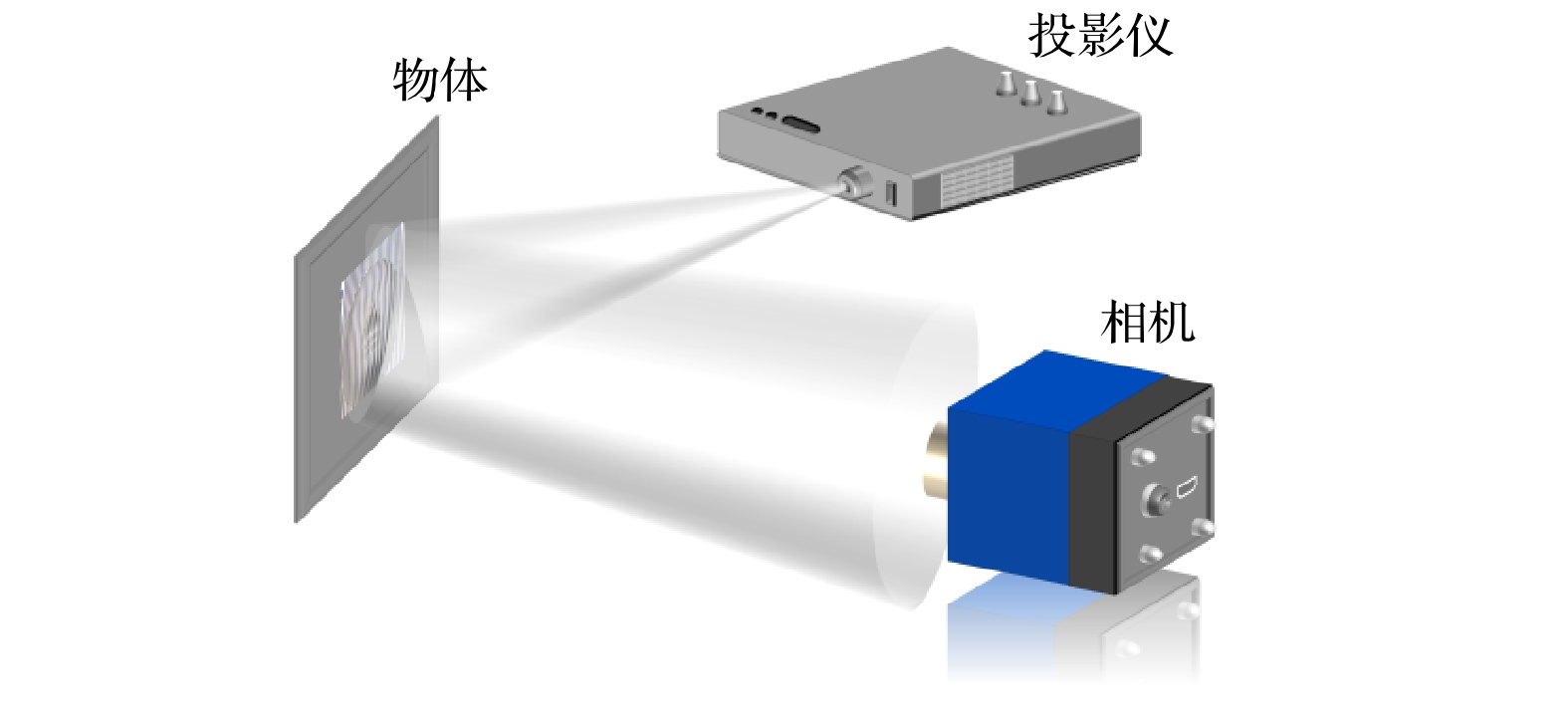
 下载:
下载:

